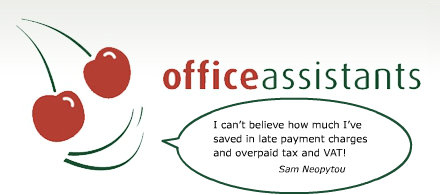If you are nearing the threshold for VAT registration, or are considering registering voluntarily, then one of the most important decisions you will need to make is whether to opt for Standard Rate VAT, or Flat Rate VAT.
If your turnover is expected to be more than £150,000 in the twelve months following your VAT registration date, then you only have one choice, and that is Standard Rate VAT. However, if your turnover is expected to be under this threshold, then you have both options to consider. Let’s take a look at the differences between the two schemes.
Flat Rate VAT
The Flat Rate VAT scheme was introduced to help simplify the VAT system for smaller businesses.
It involves using a predetermined VAT rate based on the type of industry you operated within. This rate is what you pay HMRC. You still however charge the prevailing standard rate of VAT to your clients.
The amount you pay to HMRC is calculated by applying your predetermined percentage to the total amount of your sale, i.e. your rate plus the prevailing VAT rate. The difference between the two rates is retained by your limited company as taxable income. You can check the rate you should be paying here.
Different industries pay different rates and you will need to check which applies to your particular business. Some sectors such as food or children’s clothing retailers are as low as 4 per cent, whilst others such as IT consultants are 14.5 per cent. If you are what is known as a ‘limited cost trader’, in other words, the goods you purchase cost less than either 2 per cent of your turnover, or £1,000 per year, then your rate will be 16.5 per cent. You can use this tool to work out if you fall under this category.
Standard Rate VAT
The Standard Rate VAT scheme is more straightforward to explain. In short, you will charge VAT at the prevailing rate, and then return the VAT you charged in full to HMRC. At the same time you will claim back any VAT you paid on qualifying purchases, in other words, anything you have purchased solely for business use. This amount is offset against what you owe, so you only have to pay the difference to HMRC.
VAT Returns
You will need to file a VAT return every three months, regardless of which scheme you are on. If your turnover is above the current threshold for VAT, then as of April 2019 you will need to register for and use the MTD for VAT scheme to make your VAT returns under the government’s new Making Tax Digital program.
Help with your VAT
If you are looking for professional assistance with registering for and managing your VAT returns, why not talk to Office Assistants? We have several decades of experience and are MTD ready, ensuring all our clients are compliant with the new government regime for VAT reporting. Please feel free to get in touch should you wish to discuss any aspect of VAT.





